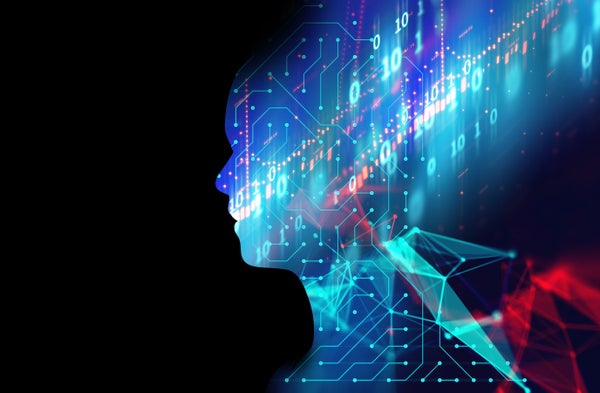This article was published in Scientific American’s former blog network and reflects the views of the author, not necessarily those of Scientific American
During the past few years, all kinds of businesses have begun using what they call “artificial intelligence.” One international survey said 37 percent of organizations have, as a press release put it, “implemented AI in some form.”A different survey, looking at U.S. businesses, put the figure at 61 percent. A third, focused on the U.S. and the U.K., said, in the words of another press release, a whopping “77% have implemented some AI-related technologies in the workplace.”
The numbers don’t differ based on geography alone. They highlight a problem facing any discussion about AI: Few people agree on what it is.
Working in this space, we believe all such discussions are premature. In fact, artificial intelligence for business doesn’t really exist yet.To paraphrase Mark Twain (or rather a common misquote of what Twain actually said), reports of AI’s birth have been greatly exaggerated.
On supporting science journalism
If you're enjoying this article, consider supporting our award-winning journalism by subscribing. By purchasing a subscription you are helping to ensure the future of impactful stories about the discoveries and ideas shaping our world today.
We’re not alone in thinking this. Luc Julia, Samsung’s vice president of innovation and co-inventor of Siri, has said something similar. Today’s tools for businesses involve mathematics, statistics, machine learning, deep learning and big data—with better machines than in the past. But what is so often referred to as AI doesn’t actually involve an artificial form of intelligence, Julia argues. Understanding this is crucial for businesses that want to take full advantage of the opportunities new technologies have to offer and build defenses against future competition.
Today’s tools can be powerful. But AI is best thought of as a next-generation set of technologies that businesses have not yet begun to use. Someday they will—and that will cause a whole new era of disruption. If businesses think they’re already using these technologies, they may not be prepared for the competitors who better understand the differences, put them to use and come up with better, more powerful ways to serve customers.
So if it isn’t AI, what technologies are businesses using today?
For many, it’s automation. Organizations are using processes that have existed for decades but have been carried out by people in longhand (such as entering information into books) or in spreadsheets. Now these same processes are being translated into code for machines to do. The machines are like player pianos, mindlessly executing actions they don’t understand.
Many traditional companies aren’t even doing this.One of us (Simkoff) launched States Title to transform the title insurance industry after discovering that it was plagued with outdated mechanisms, including large numbers of employees doing manual data entry. With an “it ain’t broke, why fix it” mentality, companies in this market were keeping the same old processes in place, with personnel repeatedly entering the same information into multiple computer programs—a system that’s expensive, rife with errors and easy to improve through automation.
Some businesses today are using machine learning, though just a few. It involves a set of computational techniques that have come of age since the 2000s. With these tools, machines figure out how to improve their own results over time.Machine learning looks at patterns and trends from data analysis and draws conclusions.
Before joining States Title, one of us (Mahdavi) used some of these technologies for research in the physical sciences, deriving results on galaxies, cosmology and dark matter. These kinds of “far out” technologies require machines that can build on their own discoveries. They involve getting machines to use deductive logic and problem-solving, and to keep reinforcing their processes with what they’ve learned.
Machine learning can have applications in any business. If yours isn’t using it now, be aware that there are almost certainly competitors in your industry looking to do so.
How is artificial intelligence different? As we see it, AI determines an optimal solution to a problem by using intelligence similar to that of a human being. In addition to looking for trends in data, it also takes in and combines information from other sources to come up with a logical answer.
When AI for business arrives, expect a radical transformation. It will give birth to organizations built differently from the ground up. Rather than asking what products or services people can provide and how machines can help them do so, the leaders of these businesses will start with what artificial intelligence can do and build businesses around that. True AI may even start a company on its own. It will be a new paradigm.
Business leaders would do well to become acquainted with the latest technologies as they’re developed and to hire experts who understand them. One of the biggest reasons States Title took off so quickly was that it entered an industry unprepared for the kind of change that the most cutting-edge technologies provide. At the speed of change in today’s business environment, every industry is ripe for similar disruption.
